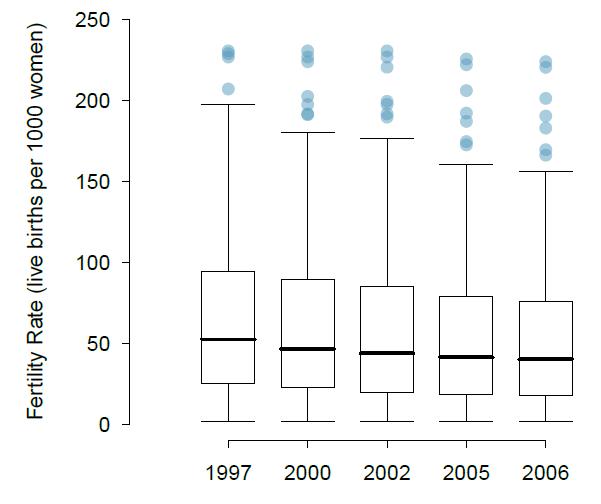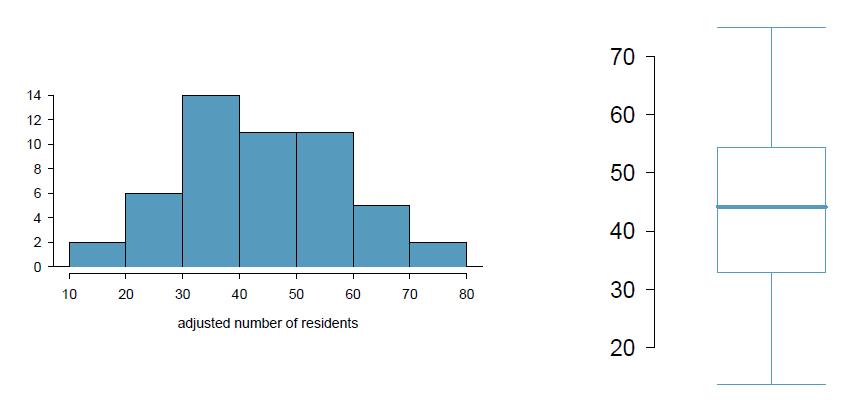Data are available on the number of children born to women aged 15-19 from 189 countries in
Question:
Data are available on the number of children born to women aged 15-19 from 189 countries in the world for the years 1997, 2000, 2002, 2005, and 2006. The data are defined using a scaling similar to that used for the nursing home data in Exercise 1.30. The values for the annual adolescent fertility rates represent the number of live births among women aged 15-19 per 1,000 female members of the population of that age.

(a) In 2006, the standard deviation of the distribution of adolescent fertility is 75.73. Write a sentence explaining the 75th percentile in the context of this data.
(b) For the years 2000-2006, data are not available for Iraq. Why might those observations be missing? Would the five-number summary have been affected very much if the values had been available?
(c) From the side-by-side boxplots shown above, describe how the distribution of fertility rates changes over time. Is there a trend?
Data From Exercise 1.30



Step by Step Answer:

Introductory Statistics For The Life And Biomedical Sciences
ISBN: 9781943450121
1st Edition
Authors: Julie Vu, David Harrington





